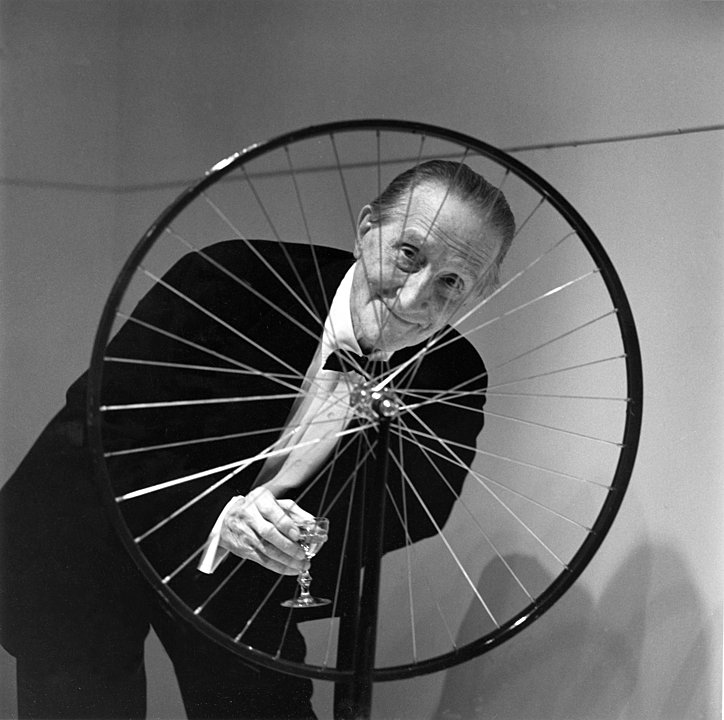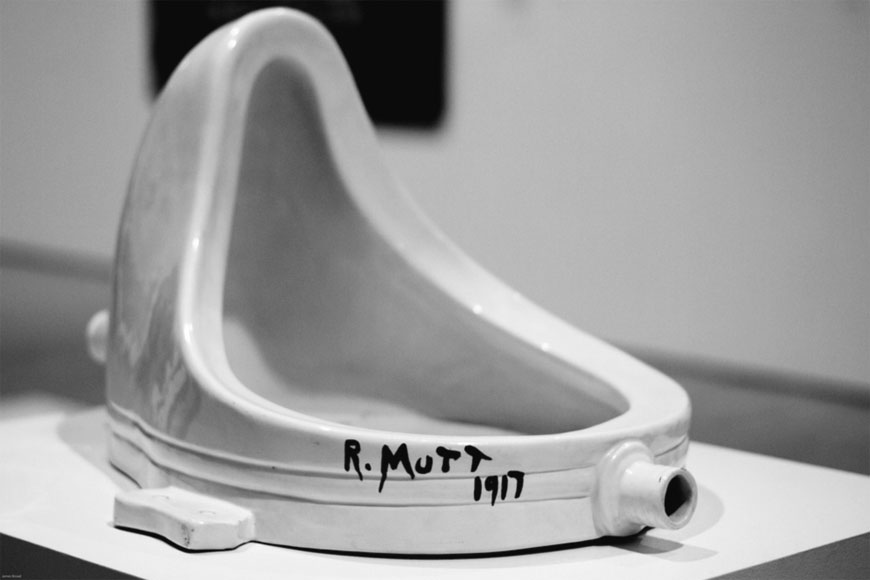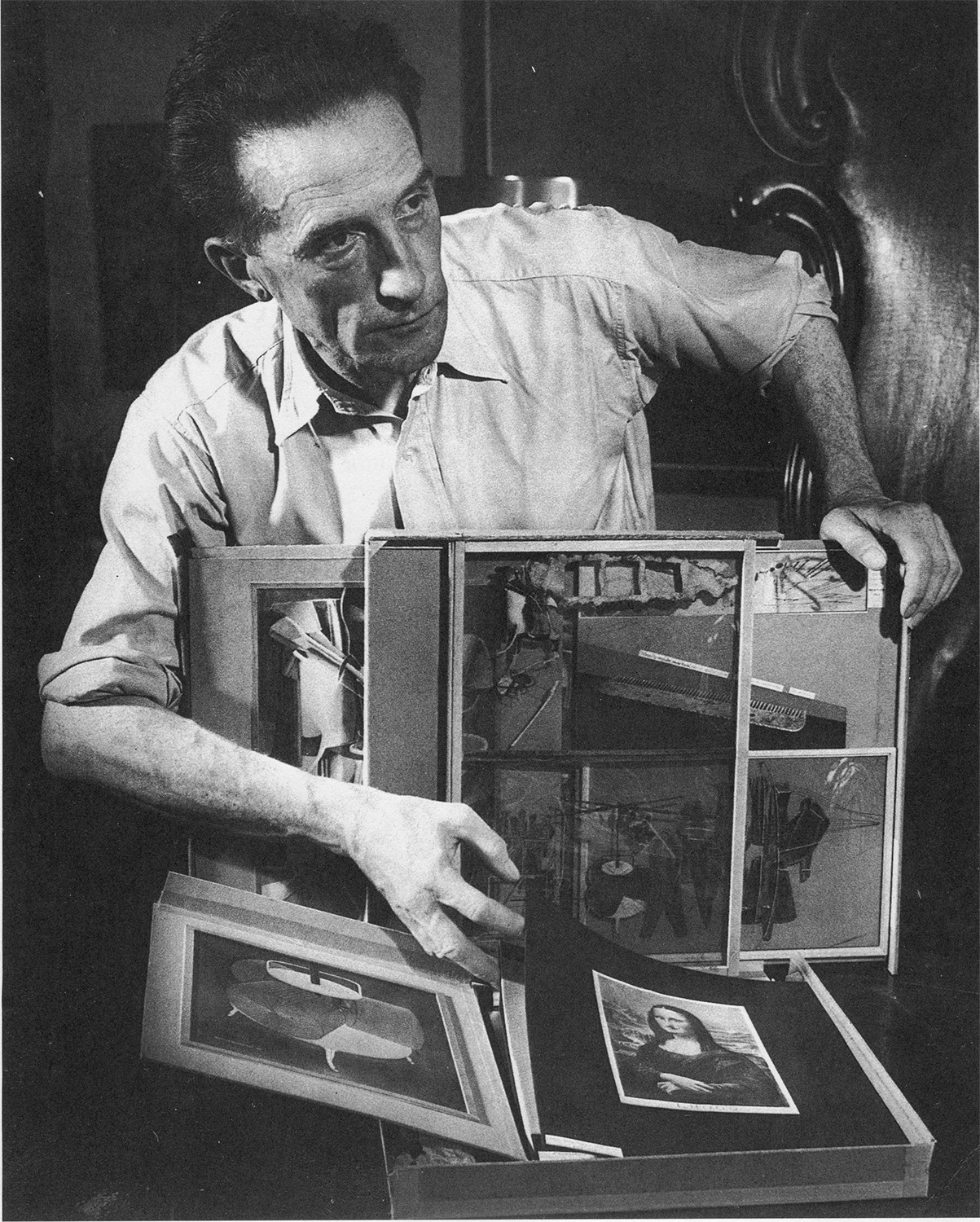
There is a great artist to whom I have not yet dedicated proper space in this blog and now the time has come to dedicate a post to the life of Marcel Duchamp. Born in 1887 in Blainville-Crevon, Duchamp was a multifaceted artist, capable of completely revolutionising the art world through his creative genius. In this post, I tell you about his life and his contribution to the conception of art, focusing in particular on his revolutionary ready-made technique and conceptual art.
Life of Marcel Duchamp between the art revolution and Ready-made

La Fontana di Marcel Duchamp.
From a young age, Henri-Robert-Marcel Duchamp showed exceptional talent in the visual arts. From his teenage years, he ventured into the world of painting, inspired by the theories of Impressionist painters and masters such as Cézanne.
His paintings such as ‘Landscape at Blainville,’ ‘Chess Game,’ ‘Nude with Black Stockings,’ and ‘Sonata’ reflect the influences of the different artistic currents of his time, such as Expressionism, Cubism and Futurism.
Marcel Duchamp’s life constantly oscillates between a very strong desire to revolutionise art and the creation of works that give rise to a real movement: the ready-made.
THE BIRTH OF THE READY-MADE AND CONCEPTUAL ART
In 1913, Duchamp reached a turning point in his artistic career. The work ‘Bicycle Wheel’ marked the beginning of what would become known as the ready-made movement. With this innovative technique, Duchamp transformed common objects, readily available on the market, into abstract works of art, stripping them of their original function.
The intention was to involve the viewer and make his or her thoughts the protagonist of the work.
THE MOST ICONIC WORKS
Among Duchamp’s most famous works are ‘L.H.O.Q.’ or ‘Mona Lisa with a moustache,’ where the artist mocks Leonardo’s masterpiece by creating a provocative photographic reproduction. Another example is Duchamp’s ‘Fountain’, the famous urinal signed with the pseudonym R. Mutt. This work became a symbol of provocative and challenging art.
THE EXPERIENCE IN THE UNITED STATES
Duchamp travelled to the United States and, together with friends like Man Ray, founded the Society of Independent Artists, which promoted avant-garde art, including Dadaism. The exhibition organised by the society offered anyone the opportunity to exhibit their work, and it was in this context that Duchamp, rebelling against convention, presented his ready-made “Fontana.” Despite the initial rejection, the work would achieve the success it deserved in the following years.
DUCHAMP’S PSEUDONYMS
Marcel Duchamp was such an enigmatic and creative artist that he used various pseudonyms to authenticate his works. One of the most famous is ‘Rrose Selavy,’ an alter ego that represented his female identity. This pseudonym was associated with works such as ‘Belle Haleine, eau de voilette’, which was a perfume bottle created for Yves Saint-Laurent, and ‘Air de Paris’, which actually contained the air of Paris. Truly unique examples of conceptual art that remind us of so many works that would be produced a few decades later by Pop Art or the ingenious inventions such as Piero Manzoni’s Merda d’Artista (Artist’s Shit).

Fotografo non identificato, Marcel Duchamp con un esempio incompleto di Scatola in una valigia nella residenza di Peggy Guggenheim, 440 East 51st Street, New York, agosto 1942. Pubblicato in “Artist Descending to America,” Time, vol. 40, no. 10, 7 settembre 1942, p. 102
The life of Marcel Duchamp was that of a visionary artist who left an indelible mark on modern and contemporary art. With his ingenious ready-made technique and conceptual art, he broke down the barriers between the everyday object and the work of art, opening up new perspectives for future generations of artists.
His free spirit and desire to experiment have continued to inspire artists today and will continue to do so in the future.

